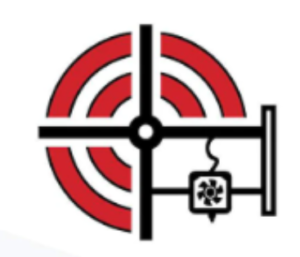AFM Capital Partners has acquired Owens Industries through its portfolio company, Pro Products, adding one of Wisconsin’s leading ultra-precision CNC machining companies to its manufacturing platform. Owens makes very accurate, small-batch metal parts for aerospace, defense, space, and medical projects. The company also offers metal additive manufacturing (AM) services in high-performance alloys, such as rhenium, cobalt-rhenium, Inconel, and molybdenum. It combines AM with five-axis milling and EDM, a process that uses an electrically charged wire to cut metal with extreme accuracy, to produce finished, tight-tolerance parts.
Cantor Fitzgerald advised Owens Industries on the sale and said this was the 22nd digital and advanced manufacturing deal their team has completed since 2021. In other words, Cantor has been very active in helping high-precision manufacturing companies get bought or sold. And that gives a good sense of how much money is moving into this part of the industry and how strong the demand is for companies that make very accurate metal parts.
So why does this matter for AM? Because Owens already works with both CNC and metal AM, these two processes often support the same applications and are used side by side in real production.
Even though Owens Industries is a CNC company, it operates in the same world that metal AM is trying to serve: mission-critical aerospace and defense parts made from tough, high-performance materials.
In real production, these two technologies are very much connected. Many metal 3D printed parts still need machining at the end. Things like holes, threads, and flat surfaces are usually finished on a CNC machine. In fact, many shops also use CNC to check AM parts or combine both steps in one workflow.
For example, companies like Wagner Machine typically rely on wire EDM, milling, or turning to finish 3D metal printed parts so that the final features have superior quality. Baker Industries (part of Lincoln Electric) uses large-scale metal printing but still plans for finish machining as part of the process, especially on big WAAM builds. In the UK, Polar Technology also states that printed parts usually need CNC machining afterward to correct distortion and bring the part into true tolerance. DM3D, which specializes in DED for aerospace, describes a workflow where they print a near-net-shape part and then use precision machining for the final surfaces.
Meanwhile, BigRep suggests that “Printed parts can also be machined to achieve dimensions with critical tolerances or required surface qualities, or even to mill threads. Jigs and fixtures, as well as clamping and positioning tools made by 3D printing, facilitate working with CNC machines.”
Stratasys also points out that many teams combine both technologies by using AM to make complex shapes or lightweight structures and then machining the precise features they need at the end.
Another example is machine tool builder DMG MORI, which sells hybrid systems that do both AM and CNC. They print the part and machine it in the same system, depositing metal first and then switching to CNC cutting so everything stays aligned and ready for final tolerances.
Because of all this, when investors back ultra-precision machining companies, they also support the parts of manufacturing that 3D printing depends on. In this case, they’re backing a company that performs both processes itself.

3D printer prints blue shapes on a blue background, close-up. Image courtesy of Owens Industries.
How Owens’ work connects to metal AM
Owens makes very precise parts from hard, high-performance metals—exactly the materials and applications where metal AM has been growing. And since Owens offers metal AM services too, it now sits on both sides of that workflow: printing complex parts and machining them to final tolerance.
The deal also reflects the rising demand for suppliers who can deliver small batches of highly accurate parts for aerospace and space programs. This “high-mix, low-volume” style of work is the same environment where many metal AM companies already operate. Firms like Velo3D, which prints complex metal parts for rockets and engines; Sintavia, a supplier of low-volume flight hardware for defense and space; and Nikon AM Synergy, formerly Morf3D, which produces metal parts for satellites and space systems; all operate in this same high-mix, low-volume environment. The same goes for Incodema3D, Visser Precision, and several 3D Systems and AddUp service centers that focus on small-batch, high-precision metal work. They build small batches of complex metal components.

5 Axis CNC Machine Shop in Cheyenne, Wyoming. Image courtesy of Owens Industries.
A signal of where the market is going
During the recent AM Investment Strategies session, hosted by Additive Manufacturing Research and Cantor Fitzgerald, speakers pointed to a clear shift in the market. Thermal management for the fast-growing AI infrastructure sector was a major theme, and several analysts said investor confidence in advanced manufacturing is starting to come back.
AM Ventures’ Arno Held also said that investors are becoming more careful and better informed about the technologies they choose to support. Instead of chasing “anything AM,” like what happened years ago, they’re now paying closer attention to hardware, materials, and production tools that solve real problems on the factory floor.
That context matters here. Cantor Fitzgerald said this deal is the 22nd digital or advanced manufacturing transaction their team has handled since 2021, showing steady activity in the sector. The Owens acquisition fits the trend highlighted during the webinar: rising interest in suppliers that make high-precision hardware and the parts metal AM works next to, and, in this case, parts made by metal AM itself.
It also connects to the supply-chain picture discussed on the call. Aerospace and defense programs often use CNC machining and metal AM together, and many printed parts still need tight-tolerance finishing before they can be used in flight hardware or propulsion systems. Owens’ work, “complex, tight-tolerance components from exotic materials,” sits directly in that space.
So the money isn’t just going into AM companies and printers. It’s also flowing into the steps that support AM, qualify AM parts, and finish them. And here, into a company that handles both printing and machining under one roof.

3D printed wind turbine in aluminum metal. Image courtesy of Owens Industries.
Overall, this deal points to a few clear things. Demand for very precise, low-volume metal parts is rising, especially in aerospace and defense. CNC and AM are being used together more than ever. And investors want companies that can deliver accuracy and fast turnaround.
With Owens offering metal AM as well as ultra-precision machining, the acquisition is a strong signal that hybrid, high-accuracy production is becoming a major focus as the industry heads into 2026.
Subscribe to Our Email Newsletter
Stay up-to-date on all the latest news from the 3D printing industry and receive information and offers from third party vendors.




